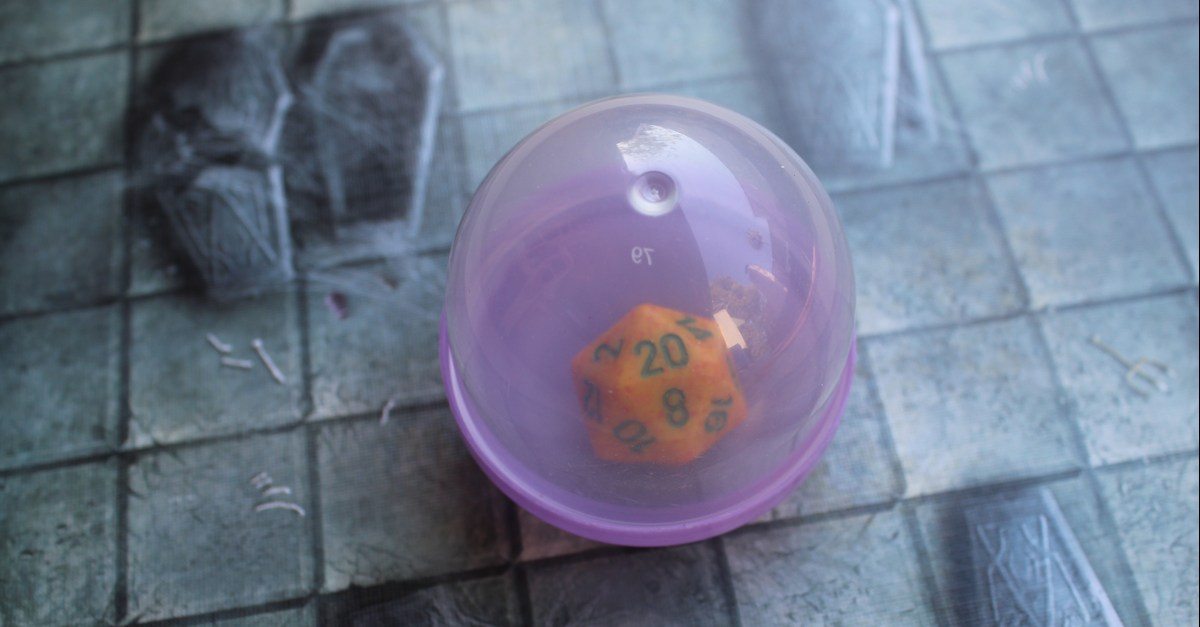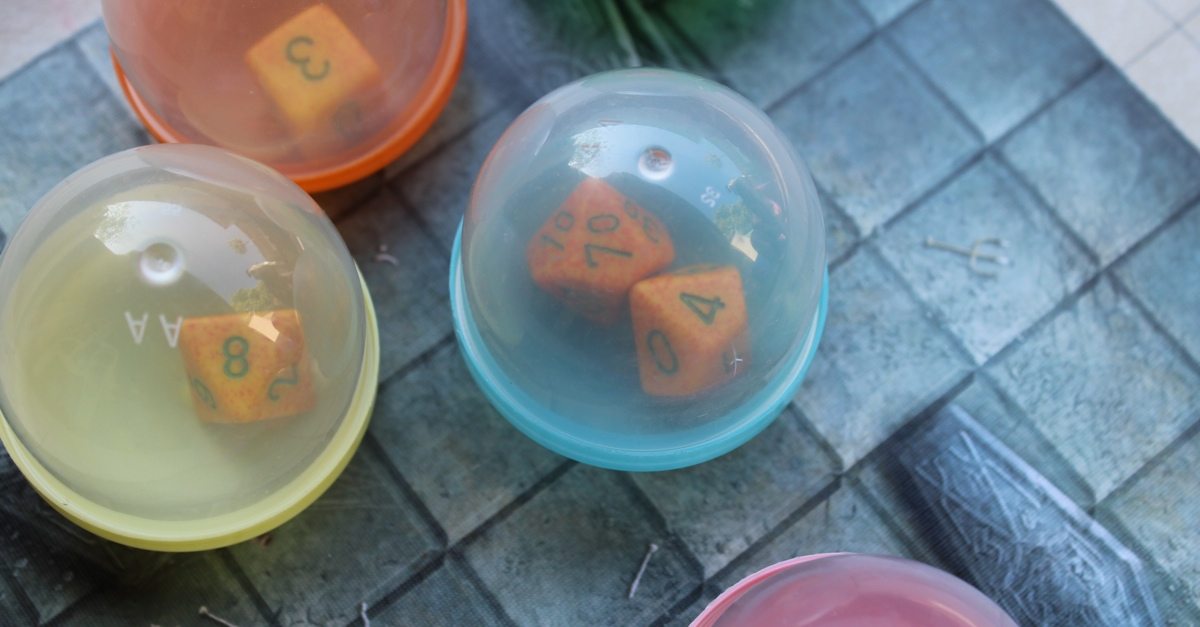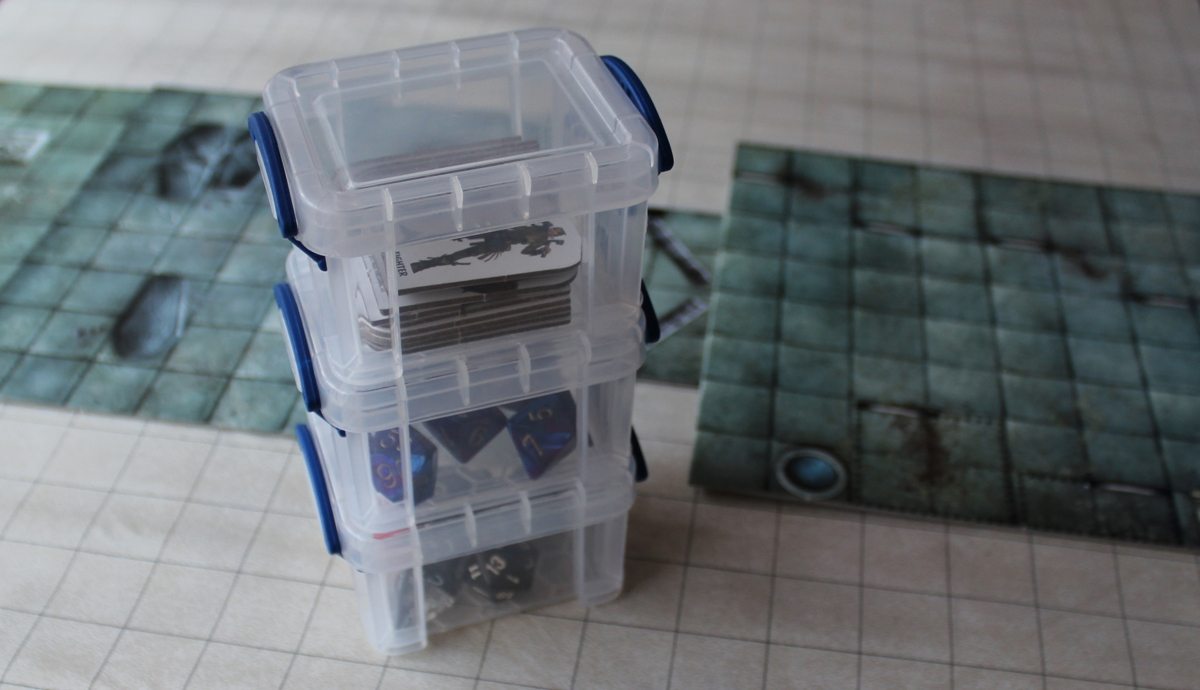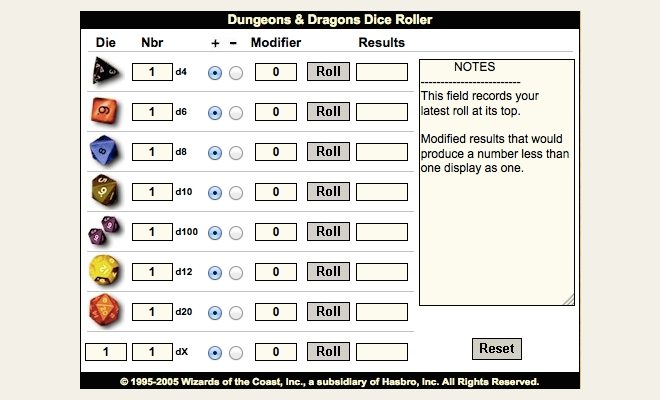It feels like you’ve been in this dungeon for days …
… and that’s probably because you have. You’ve battled your way through hordes of grubby goblins, swarms of poisonous giant spiders, and endless waves of scimitar-wielding skeletons. You lost the halfling to that diabolical guillotine trap a few corridors back, the half-elf got absorbed into translucent cube of goo, and the only treasure chest you’ve seen since you entered the place blew up in the thief’s face.
You’re tired. You’re hungry. And now you realize you’ve just walked into the dragon’s lair. At last! This is it, the battle that makes all the other battles worth it. You draw your sword and charge toward the scaly beast.
You’re excited, so you shake the 20-sider with extra vigor, let it fly, and … it rolls right off the table and under the couch. (You can’t see it, but it was totally a natural 20).
We’ve all been there. So here are a few dice-rolling solutions that will keep those dice on the table and in the game.
The Inverted Box Top
The Easiest Solution

The easiest way to keep the dice on the table is simply turn over the lid of the game box and roll the dice inside the safety of its four walls. (And if your game doesn’t have a box lid, it’s easy to improvise with the lid of nearly any box).
With this technique, there’s no way that overzealous roller (every group has one) can lose the dice or go bowling with your strategically placed gaming figures. But this method takes up a lot of space—and during a tabletop game, that tabletop real estate is valuable.
Reading the dice can be problematic, too. If all the dice are rolled in the box top, you either have to pass the box around or roll the dice in a central location. This can make the dice hard to read and disrupt your game.
- Pros: Keeps the dice on the table.
- Cons: Takes up a lot of valuable gaming space. Dice can be hard to read. Disruptive.
- Cost: Free.
The Bubble
A Better Solution

Any parent is familiar with those plastic bubbles that hold small toys you get from vending machines. The toys are usually cheap and discardable, but for the dice-roller, the bubbles themselves are the real prize.
When I’d first read about this dice-rolling solution on Lifehacker (via Eberhart’s Explorers), I thought it was such a great idea, I immediately rushed out to get some bubbles of my own.
And here’s where I ran into a snag. These bubbles weren’t as easy to find as I thought they’d be (you may have better luck). The neighborhood laundromat had many choices, but the bubbles themselves were either spheres (and not conducive to dice-rolling) or the bubble part was too opaque to be useful. I eventually found some at the mall that did the trick.
Most of these bubbles hold one die comfortably, which can be a small problem. During a game, I always ask the players to roll the “to hit” die and damage die in the same roll to keep the game moving. Because changing the dice out in these bubbles isn’t the smoothest process, ideally each player should have at least two or three, and that starts to crowd the table again.

Plus at $1.00 to $1.50 a pop (depending on the appeal of the toy inside), this started to turn from a good dice-rolling solution into a small investment. Properly outfitting the party with bubbles will cost almost as much as starting over with the Dungeons & Dragons 5th Edition.
- Pros: Keeps the dice from rolling wildly all over the table.
- Cons: Hard to change out the dice. Doesn’t hold more than one die comfortably. Possible difficulty locating appropriate bubbles.
- Cost: $1.00 to $1.50 each.
The Really Useful Box
The Ultimate Solution

After being a little disappointed by the bubble method of dice-rolling, I came across the 0.14L Really Useful Box purely by accident at the local office supply store. Almost immediately, I knew this was going to be a great addition to the RPG toolbox.
The Really Useful Box is a small but durable plastic container, 3 1/2? by 2 5/8? by 2? deep, with snap-down buckles that secure a removable lid. It holds at least two dice comfortably, and the lid is easy to open so dice can be switched out faster than you can drop your bow and draw your sword.
I unleashed the Really Useful Box as a dice-rolling solution on my players at our last Pathfinder session, and not a single die left the table during the seven hours we played. Even our most enthusiastic dice-rollers had to admit it was a great way to roll dice. The only real difficulty we ran into with this method was easily reading the results of a d4 roll.
The boxes can also hold about an encounter’s worth of Pathfinder figurines and bases, so you can pre-load a box with all the monsters you need for a given encounter and stack them up, ready to be deployed as needed.

In addition to the 0.14L variety, Really Useful Boxes come in many different and useful sizes, so they’re suitable for all sorts of gaming storage needs.
- Pros: Keeps the dice on the table and in play.
- Cons: May be challenging to find in stores.
- Cost: $0.99 each.
Virtual Dice Rollers
The Bonus Solution

Of course you can keep the dice on the table just as easily by skipping the dice entirely and using an online dice-rolling solution like the Dungeons & Dragons Dice Roller or Roll Dice Online, or an app such as the Dice-Roller Simulator for iOS. But, really, there’s something gratifying that comes with rolling physical dice.
- Pros: No dice to roll off the table.
- Cons: Are your players rolling dice or texting? Somewhat unsatisfying.
- Cost: Free.





You neglected to mention the classic solution to dice rolling, dice towers! There’s some great custom ones out there to be had from places like Unique Dice Towers. I’ve picked up a few of theirs, including a Cthulhu dice tower and a Star Trek dice tower.
You’re right! I totally neglected dice towers. I’ve never used one, but they look pretty cool. I would be concerned about gaming table real estate and positioning the tower so every gamer has ready access to the tower.
And the totally geek solution, to 3D-print your own dice tower
Years ago, my now husband made dice boxes with a removable sliding lid that can be used as a writing surface. We still have a bunch, and we love them for many uses. They even hold some HeroClix.
Those sound fantastic! Anything that pulls double-duty is aces. Any chance of seeing a picture of one?
I can’t help thinking you may have sold me comics in the late 90’s . . . and if so, my wife would like to have a few candid words with you about the ‘legacy’ in the basement that my boys will some day inherit.
That’s totally possible. Was this in Madison?
Most dice towers don’t take up that much room, and you just pass them around for dice rolling. Here’s the latest one I got, from a Kickstarter last year(to go along with my highly anticipated copy of Cthulhu Wars): https://s3.amazonaws.com/ksr/projects/604421/photo-main.jpg?1397825751
I’ve seen something very similar to your ‘really useful box’ at the dollar store….in packages of 3 for a dollar.
Michael’s carries them for about $1-2 each. I use them with card stock dividers to organize my resistors and capacitors (kept in small baggies). I can look through the lid and see the values in each box (two for resistors, one for capacitors). Love these things.
I hadn’t thought to check Michael’s; that’s good to know. And just look how useful they are. They are good for storing all sorts of goodies.
I do love a good trip to the dollar store.
THIS was an awesomely useful post. I was almost to the point of buying more of those large toddler friendly dice because my kids can find them easily when they roll them off the table.
Glad you liked it. Thanks!
I put my dice in the clear acrylic box my Chessex dice sets came in. For multiple attacks I stick one D20 in each box then tape them together, then write the bonus on the box for each dice. For my two-weapon fighting on four attacks per round I have four boxes and four D20’s, with bonus and hand written on each, so now I easily know which hand hits and what damage bonus to apply.
If you tape the black bases together you can still open the box to change dice.
That’s a good system, too. The price is right and writing the bonuses on the outside is inspired. Excellent idea!